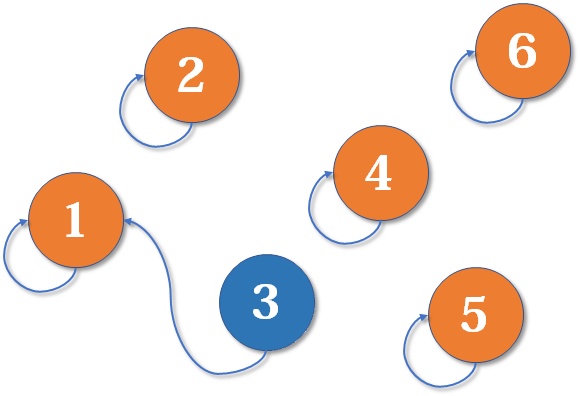数据结构-并查集
概述
并查集 是一种基于双亲表示法表示的森林。它以一棵树表示一个集合,进而处理不相交集合的合并、查询问题。
其结构图大致如下:

针对并查集中的合并、查询操作有多种优化手段,我们在此提前介绍,并且仅展示优化后的代码。
针对合并操作的优化
- 按大小求并:总让含有较少元素的树成为含有较多元素的树的子树。
- 按高度求并:总让高度较低的树成为高度较高的树的子树。
针对查询操作的优化
- 路径压缩:将查找点到根结点的路径上所有结点的父节点直接指定为根结点。
综合合并、查询优化
按大小求并与路径压缩二者可同时实现,而按高度求并与路径压缩并不能同时实现,原因在于:路径压缩会破坏树的高度。由于此时节点存储的高度信息实际上为预估高度,故而称此时的按高度求并为按秩求并。
实际中大多数并查集都是基于按秩求并与路径压缩实现的。
经优化后,并查集各种操作的平均时间复杂度为 $O(1)$,证明过程十分麻烦,故不赘述。
结构
如上所述,并查集基于双亲表示法实现,故而使用数组最为合适。另外,本文仅考虑位置间合并、查询操作,而不考虑元素间合并、查询操作,毕竟通过散列表可将后者转换为前者。
1 | class UnionFind { |
实现
初始化
各个位置自成一棵树,并使用根结点位置标识这一棵树。另外根据当前节点的父节点是否就是它自己,即可判断当前节点是否为所在树的根节点。
1 | public UnionFind() { |
查询
1 | public int find(int index) { |
合并
1 | public boolean union(int index1, int index2) { |
相关文章